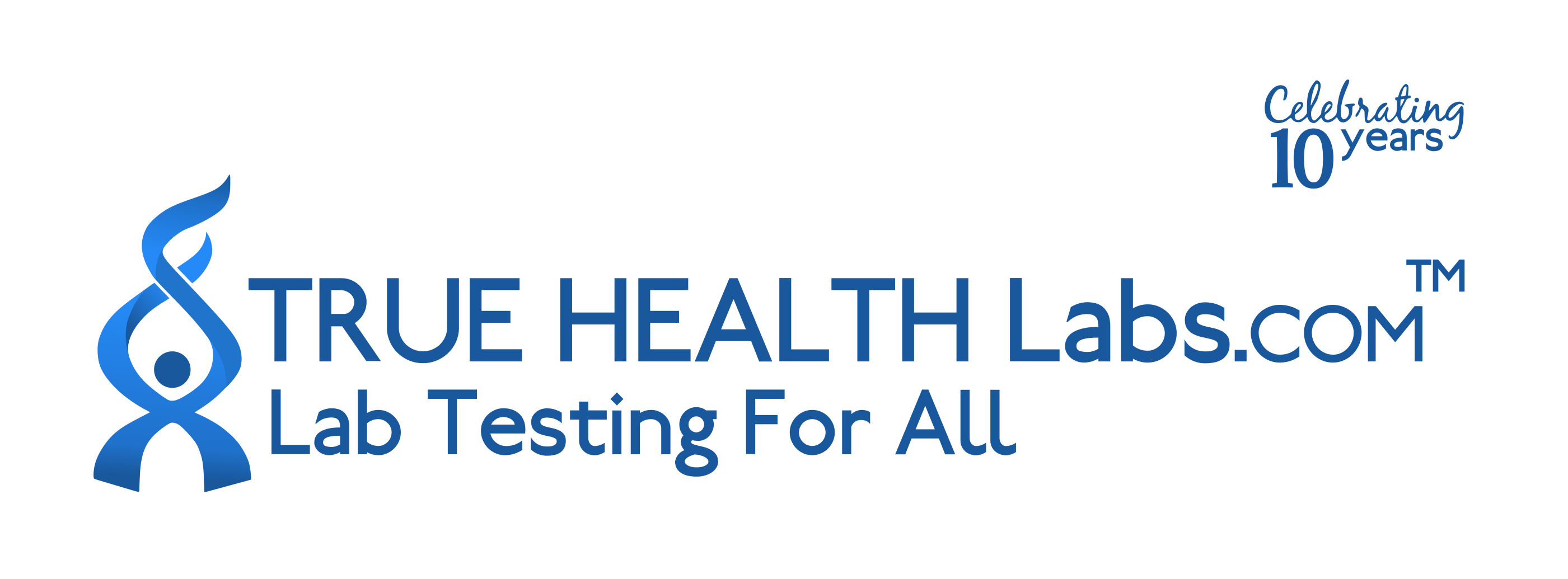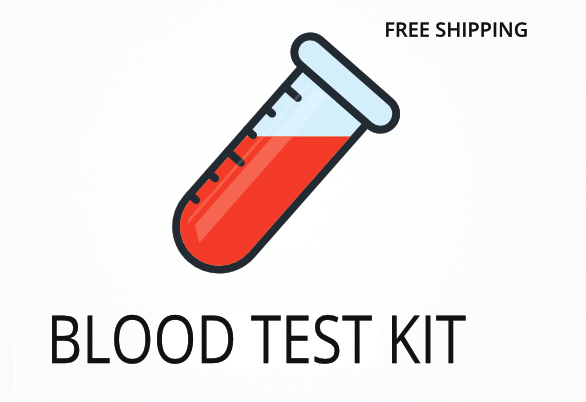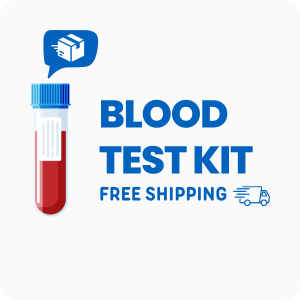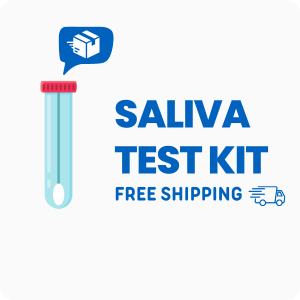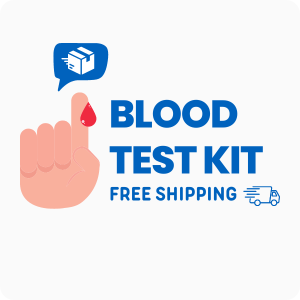Ordering the Micronutrient Test by Vibrant America
The Micronutrient Test by Vibrant America helps identify specific vitamin and mineral imbalances that may affect energy, immune response, and nutrient absorption. This test measures both extracellular and intracellular levels, giving a detailed view of your nutritional status. Interestingly, this test can reveal hidden deficiencies even when standard blood tests appear normal, as it checks nutrients inside your cells where they are actually used.
Ordering this test can help you:
- Pinpoint which vitamins and minerals are lacking or in excess
- Track how well your body absorbs and uses nutrients
- Guide dietary changes or supplement plans based on your results
- Monitor the impact of digestive issues on nutrient levels
- Support targeted care for symptoms like fatigue, brittle nails, or hair loss
Who Should Consider Comprehensive Nutrient Testing
People who feel tired even after a full night’s sleep, struggle with frequent colds, or notice changes in their skin, hair, or nails may benefit from this test. For example, someone who has switched to a plant-based diet and starts experiencing muscle cramps or mood swings could use this test to check for possible deficiencies.
Ordering this test may also be helpful if you:
- Have ongoing digestive problems like bloating or irregular bowel movements
- Notice slow recovery from exercise or frequent muscle cramps
- Experience unexplained mood changes or trouble focusing
- Are managing chronic inflammation or joint pain
- Have a family history of osteoporosis or bone weakness, as micronutrient imbalances can affect bone strength
Testing for nutrient levels can help you make specific changes to your diet or supplements, track improvements, and avoid the risk of long-term deficiencies that may become harder to correct if left unchecked. Delaying this test could mean missing early signs of nutrient imbalances that are easier to address when caught sooner.
Preparing for Your Nutritional Status Assessment
Fasting is not required for the Micronutrient Test by Vibrant America, but you may be asked to avoid supplements for up to a week before your blood draw. Always follow any instructions your doctor or healthcare provider gives you to make sure your results reflect your true nutrient status.
Labs Included When Ordering Your Micronutrient Test by Vibrant America
| Test Name | Reference Range | Significance | Low and High Levels of Micronutrient Test by Vibrant America |
|---|---|---|---|
| Vitamins | |||
| Vitamin A | 20-60 | Vitamin A supports vision, immune response, and skin repair. It is stored in the liver and released as needed for body functions. | High levels mean possible liver issues or excess supplement use.
Low levels mean risk for night blindness, dry skin, and poor immune response. |
| Vitamin B1 (Thiamine) | 66-200 | Thiamine helps turn food into energy and supports nerve and muscle function. It is water-soluble and not stored in large amounts. | High levels mean excess supplementation or kidney issues.
Low levels mean fatigue, nerve tingling, and muscle weakness. |
| Vitamin B2 (Riboflavin) | 5-50 | Riboflavin helps the body break down carbohydrates, proteins, and fats for energy and supports healthy skin and eyes. | High levels mean excess intake, usually from supplements.
Low levels mean cracked lips, sore throat, and skin problems. |
| Vitamin B3 (Niacin) | 0.5-8 | Niacin helps convert food into energy and supports the nervous and digestive systems. It also helps keep skin healthy. | High levels mean flushing, liver stress, or supplement overuse.
Low levels mean skin rashes, diarrhea, and memory problems. |
| Vitamin B5 (Pantothenic Acid) | 1-10 | Pantothenic acid is needed for making hormones and breaking down fats and carbohydrates for energy. | High levels mean rare, usually from supplements.
Low levels mean fatigue, irritability, and numbness. |
| Vitamin B6 (Pyridoxine) | 5-30 | Vitamin B6 helps the body use and store energy from protein and carbohydrates and supports brain development and function. | High levels mean nerve damage risk from supplements.
Low levels mean confusion, depression, and weakened immunity. |
| Vitamin B12 | 200-900 | Vitamin B12 is needed for red blood cell production, nerve function, and DNA synthesis. It is mainly found in animal foods. | High levels mean excess supplementation or liver issues.
Low levels mean anemia, numbness, and memory loss. |
| Vitamin C | 0.4-2 | Vitamin C supports immune function, helps heal wounds, and acts as an antioxidant to protect cells from damage. | High levels mean possible kidney stone risk or supplement overuse.
Low levels mean slow wound healing, bleeding gums, and easy bruising. |
| Vitamin D3 | 30-100 | Vitamin D3 helps the body absorb calcium and phosphorus, supporting strong bones and teeth. It also plays a role in immune function. | High levels mean risk for high calcium and kidney problems.
Low levels mean weak bones, muscle pain, and frequent infections. |
| Vitamin D, 25-OH | 30-100 | 25-hydroxyvitamin D is the main form measured to check vitamin D status. It reflects both sun exposure and dietary intake. | High levels mean too much supplement use or rare health issues.
Low levels mean bone weakness, muscle aches, and higher risk of infection. |
| Vitamin E | 5-20 | Vitamin E acts as an antioxidant, protecting cells from damage and supporting immune and skin health. | High levels mean bleeding risk from excess supplements.
Low levels mean nerve and muscle problems, vision issues. |
| Vitamin K1 | 0.2-3.2 | Vitamin K1 is needed for blood clotting and bone strength. It is found in leafy green vegetables. | High levels mean rare, usually from supplements.
Low levels mean easy bruising and bleeding. |
| Vitamin K2 | 0.2-3.2 | Vitamin K2 helps move calcium into bones and teeth and keeps it out of arteries. It is found in fermented foods and animal products. | High levels mean rare, usually from supplements.
Low levels mean weak bones and possible artery calcification. |
| Minerals | |||
| Sodium | 135-145 | Sodium helps control fluid balance, nerve signals, and muscle function. It is regulated by the kidneys and affected by hydration. | High levels mean dehydration or kidney issues.
Low levels mean confusion, headache, and muscle cramps. |
| Potassium | 3.5-5.1 | Potassium is needed for heart rhythm, muscle contraction, and nerve signals. It is controlled by the kidneys and diet. | High levels mean heart rhythm problems or kidney issues.
Low levels mean muscle weakness, cramps, and irregular heartbeat. |
| Calcium | 8.6-10.2 | Calcium builds strong bones and teeth, helps muscles contract, and supports nerve function. It is stored mostly in bones. | High levels mean possible parathyroid or kidney issues.
Low levels mean weak bones, muscle spasms, and tingling. |
| Manganese | 4.7-18.3 | Manganese helps with bone formation, blood clotting, and reducing inflammation. It is needed in small amounts for enzyme function. | High levels mean nervous system symptoms or supplement overuse.
Low levels mean poor bone growth and slow wound healing. |
| Magnesium | 1.7-2.2 | Magnesium supports muscle and nerve function, blood sugar control, and bone strength. It is found in many foods, especially nuts and greens. | High levels mean kidney issues or supplement overuse.
Low levels mean muscle cramps, tremors, and irregular heartbeat. |
| Zinc | 70-120 | Zinc is needed for immune response, wound healing, and DNA synthesis. It is found in meat, nuts, and whole grains. | High levels mean nausea, stomach pain, and immune changes.
Low levels mean slow wound healing, hair loss, and taste changes. |
| Copper | 70-140 | Copper helps make red blood cells, keeps nerves healthy, and supports the immune system. It is found in shellfish, nuts, and seeds. | High levels mean liver or genetic issues.
Low levels mean anemia, low white blood cells, and nerve problems. |
| Chromium | 0.1-0.3 | Chromium helps the body use insulin and manage blood sugar. It is found in whole grains, meats, and some fruits and vegetables. | High levels mean rare, usually from supplements.
Low levels mean poor blood sugar control and higher diabetes risk. |
| Iron | 50-170 | Iron is needed for making hemoglobin, which carries oxygen in the blood. It is found in red meat, beans, and leafy greens. | High levels mean iron overload or supplement overuse.
Low levels mean anemia, tiredness, and pale skin. |
| Other Nutrients | |||
| CoQ10 | 0.5-1.5 | CoQ10 helps produce energy in cells and acts as an antioxidant. It is important for heart and muscle function. | High levels mean rare, usually from supplements.
Low levels mean muscle weakness and fatigue. |
| Cysteine | 200-300 | Cysteine is an amino acid that helps make proteins and antioxidants. It supports detoxification and immune function. | High levels mean rare, usually from supplements.
Low levels mean poor detoxification and weak immune response. |
| Selenium | 70-150 | Selenium acts as an antioxidant and supports thyroid function. It is found in nuts, seafood, and grains. | High levels mean hair loss, stomach upset, and nerve issues.
Low levels mean weak immune response and thyroid problems. |
| Glutathione | 5-15 | Glutathione is a powerful antioxidant that helps protect cells from damage and supports detoxification in the liver. | High levels mean rare, usually from supplements.
Low levels mean higher risk of cell damage and slow recovery. |
| Asparagine | 30-80 | Asparagine is an amino acid needed for making proteins and supporting brain and nerve function. | High levels mean rare, usually from supplements.
Low levels mean poor protein synthesis and nerve issues. |
| Glutamine | 400-700 | Glutamine is an amino acid that helps with gut health, immune response, and muscle repair after exercise. | High levels mean rare, usually from supplements.
Low levels mean poor gut health and slow muscle recovery. |
| Serine | 80-140 | Serine is an amino acid needed for making proteins, brain chemicals, and cell membranes. | High levels mean rare, usually from supplements.
Low levels mean poor brain function and weak cell membranes. |
| Citrulline | 20-40 | Citrulline is an amino acid that helps remove ammonia from the body and supports blood flow and heart function. | High levels mean rare, usually from supplements.
Low levels mean poor blood flow and slow waste removal. |
| Arginine | 40-120 | Arginine is an amino acid that helps make proteins, supports blood flow, and aids in healing wounds. | High levels mean rare, usually from supplements.
Low levels mean poor wound healing and weak blood flow. |
| Choline | 7-20 | Choline is needed for brain development, memory, and muscle movement. It is found in eggs, meat, and some beans. | High levels mean rare, usually from supplements.
Low levels mean memory problems and muscle weakness. |
| Inositol | 20-60 | Inositol helps with nerve signaling, mood balance, and blood sugar control. It is found in fruits, beans, and grains. | High levels mean rare, usually from supplements.
Low levels mean mood swings and poor blood sugar control. |
| Carnitine | 20-60 | Carnitine helps turn fat into energy and supports heart and muscle function. It is found in meat and dairy foods. | High levels mean rare, usually from supplements.
Low levels mean muscle weakness and tiredness. |
| Methylmalonic Acid (MMA) | 0.08-0.56 | MMA is a marker for vitamin B12 status. High levels can show a B12 deficiency even if blood B12 is normal. | High levels mean possible vitamin B12 deficiency.
Low levels mean normal B12 status. |
Reference ranges may change slightly as labs update their methods and guidelines.
Micronutrient Test by Vibrant America FAQ
Is there Micronutrient Test by Vibrant America testing near me?
This is a test kit that can be collected at a local draw site—check the draw location link at the top of the page. For those experiencing ongoing fatigue or unexplained symptoms, having a nearby collection site makes it easier to get tested quickly and start addressing nutrient imbalances.
How do I interpret the test results?
While your treating physician should review your results, you can also schedule a one-on-one test results review with our clinical team for a detailed explanation and next steps.
What is the cost of the test?
The price listed for the test includes standard shipping to you and return shipping to the lab, but draw fees may apply. Ordering this test can help you address symptoms like low energy or brittle nails by pinpointing which nutrients need attention, so you can start improving sooner.
How often should I retest?
Retesting every 6-12 months is recommended, especially if you are making changes to your diet or supplements, or if you have ongoing symptoms. Regular testing helps track your progress and ensures that any adjustments are working as expected.
How accurate is the test?
This test uses advanced mass spectrometry and immunoassay methods to measure both extracellular and intracellular nutrient levels, with a specificity of 98% and sensitivity of 97%. TrueHealthLabs.com partners with CLIA-certified and CAP-certified laboratories to uphold rigorous testing standards for dependable results.
Medical Review Board
Reviewed by Jeff Donohue M.D. from Body Logic and Brady Hurst DC, CCCN. Written by True Health Lab’s team of editorial health contributors.
Disclaimer: This information is for educational purposes only and not intended as medical advice. Consult your healthcare provider for personalized guidance.
Why Customers Trust True Health Labs – What People are saying
Also rated 4.6 out of 5 based on 3452 ShopperApproved reviews- See all TrueHealthLabs.com reviews.
